Abstract
Angiomyxolipoma is a rare variant of lipoma, which is described by Mai, 1996, at first. The nine cases of which have been reported to date. Microscopically, the lesion consists of adipose tissue with the paucicellular myxoid areas and fat tissue with numerous thin, dilated, and congestive blood vessels. The reported cases mostly located to the superficial layer on the scalp, subungual, extremities in adults. We report one case of angiomyxolipoma located in the submuscular and parosteal area in the distal femur around knee joint in a child.
REFERENCES
1. Lee HG. Tumor of bone and joint. 1st ed.Seoul: Choisin uehaksa;1996. p. 355–8.
2. Mai KT, Yazdi HM, Collins JP. Vascular myxolipoma (“angiomyxolipoma”) of the spermatic cord. Am J Surg Pathol. 1996; 20:1145–8.

3. Kang YS, Choi WS, Lee UH, Park HS, Jang SJ. A case of multiple angiomyxolipoma. Korean J Dermatol. 2008; 46:1090–5.
4. Song M, Seo SH, Jung DS, Ko HC, Kwon KS, Kim MB. Angiomyxolipoma (Vascular Myxolipoma) of Subcutaneous Tissue. Ann Dermatol. 2009; 21:189–92.

5. Sanchez Sambucety P, Alonso TA, Agapito PG, Moran AG, Rodriguez Prieto MA. Subungual angiomyxolipoma. Dermatol Surg. 2007; 33:508–9.
6. Lee HW, Lee DK, Lee MW, Choi JH, Moon KC, Koh JK. Two cases of angiomyxolipoma vascular myxolipoma of subcutaneous tissue. J Cutan Pathol. 2005; 32:379–82.

7. Zamecnik M. Vascular myxolipoma (“Angiomyxolipoma”) of subcutaneous tissue. Histopathology. 1999; 34:180–1.
8. Tardio JC, Martin-Fragueiro LM. Angiomyxolipoma (vascul-armyxolipoma) of subcutaneous tissue. Am J Dermatopathol. 2004; 26:222–4.
Figure 1.
Plain x-ray shows mild soft tissue density swelling on the medial side of the supracondyle around knee (A). Sonograph reveals fusiform anisoechogenecity in the suprapatellar pouch area (B).
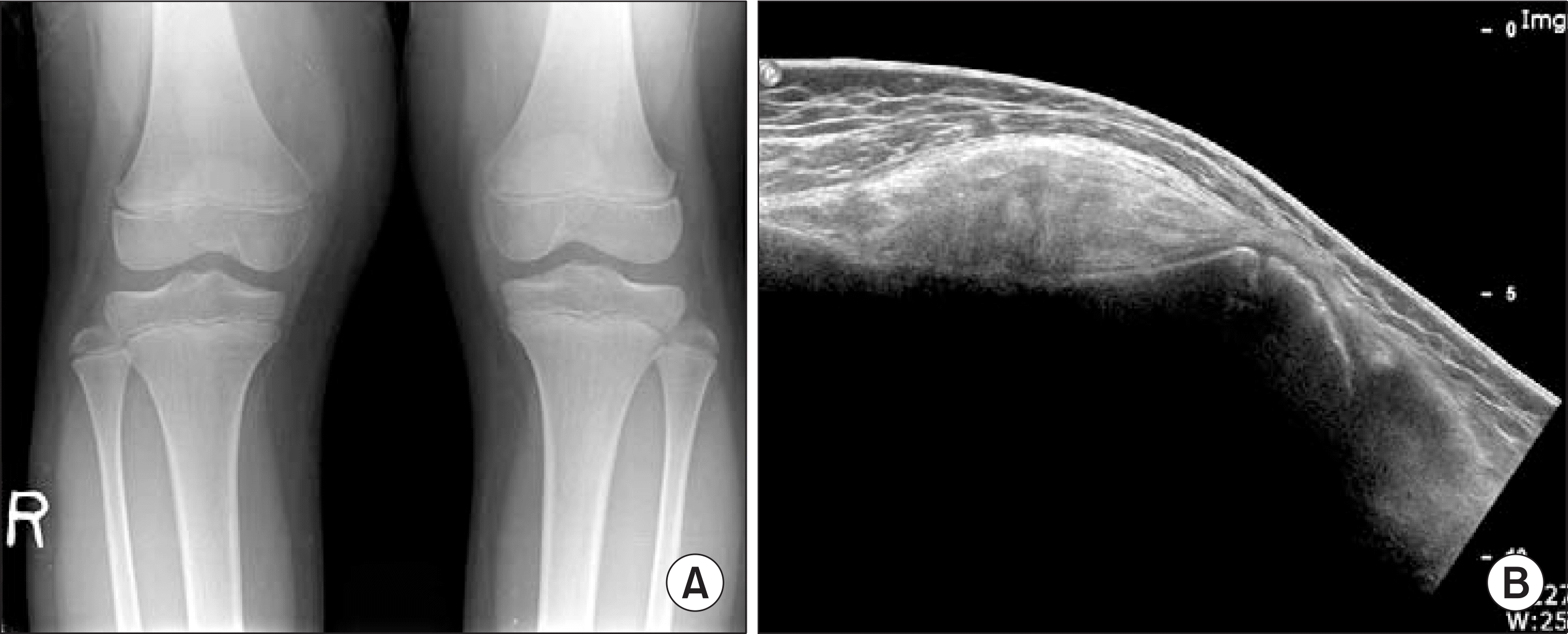
Figure 2.
T1WI shows high signal intensity in the subvastus area not invaded surrounructures (A). T2WI on the sagittal view shows low signal septations and band-like lesions around the suprapatellar pouch area (B). Fat suppression T1WI shows almost same intensity surround fat (C).

Figure 3.
We approached by direct incision of vastus medialis. The mass is located between the vastus medialis and perioeteum where the mass was relatively firm attached. The distal pole of mass is conneted with suprapatellar pouch.
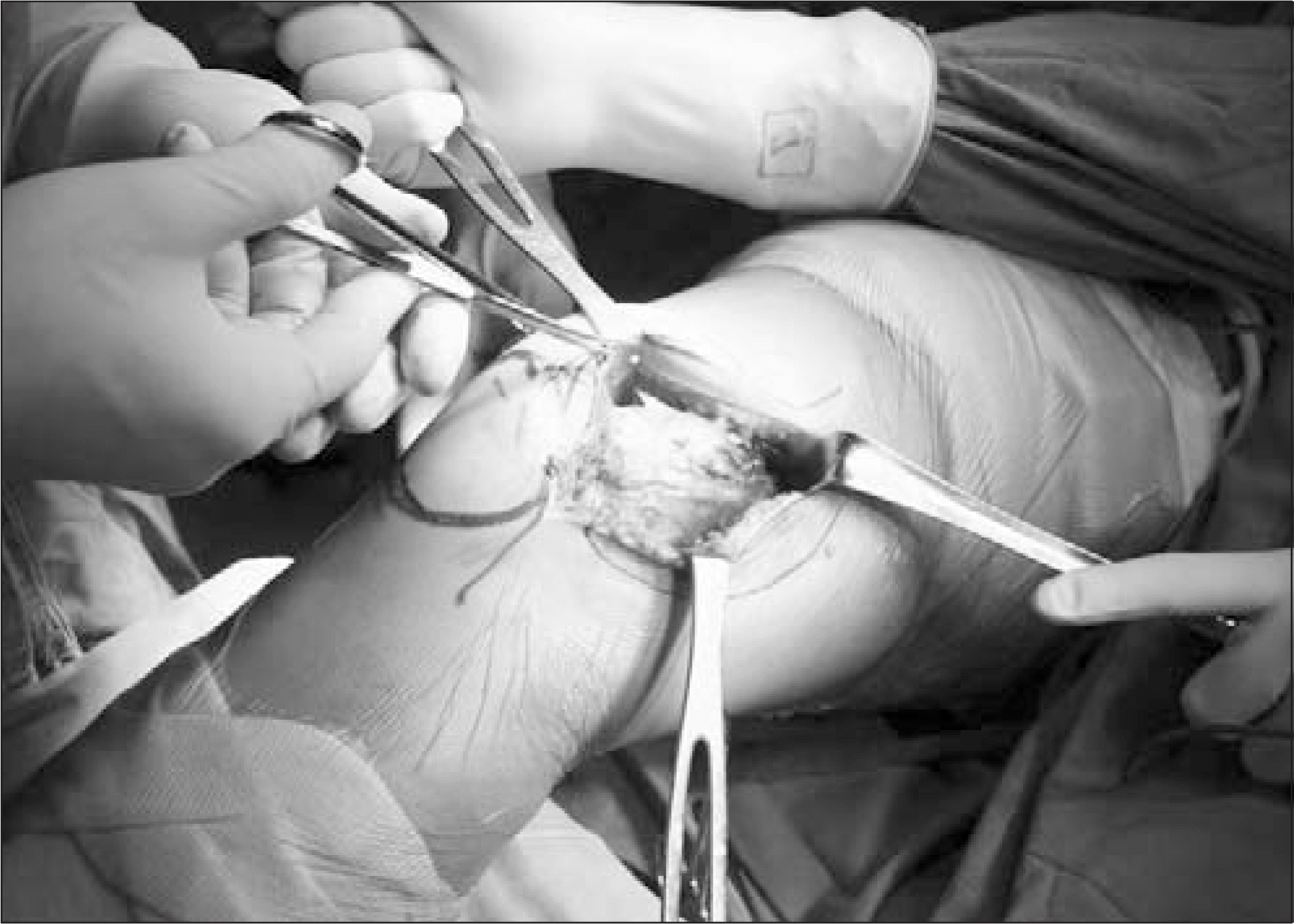
Figure 4.
The gross specimen was measured by 8.5×6.5×3.5 cm and the capsulation was not definite and surrounding muscle component was mixed (A). The cross sectional surface showed multiple focal nodular lesion (B).
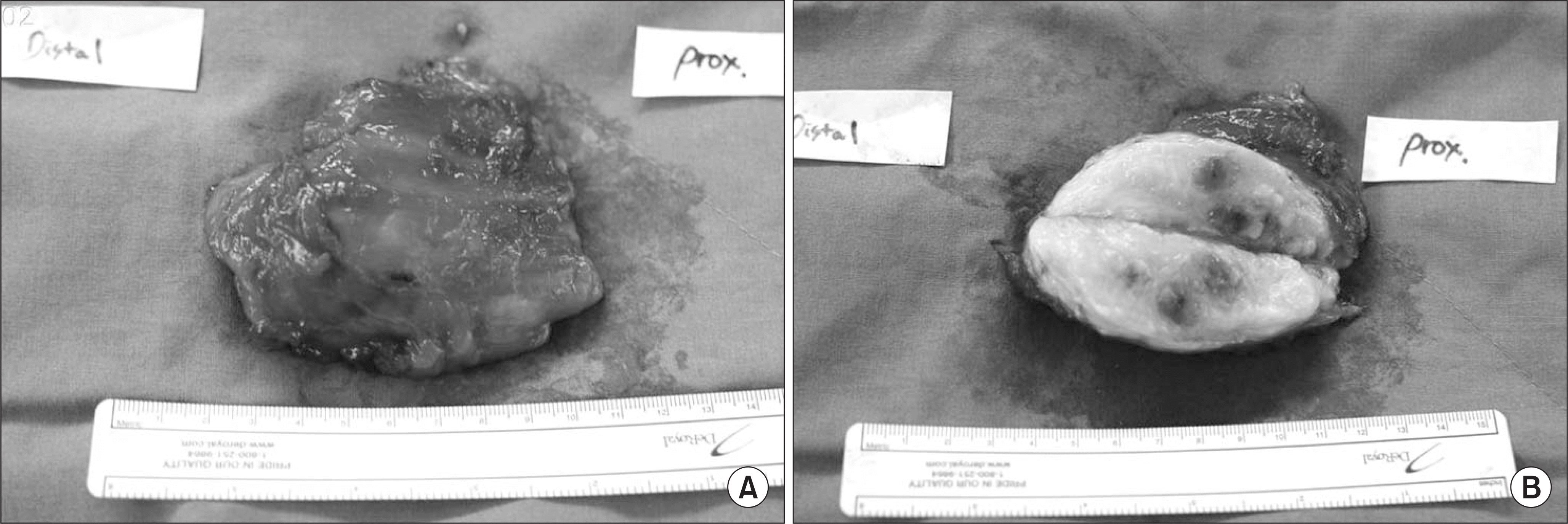
Figure 5.
Well-demarcated mass composed of paucicellular myxoid tissue and fat tissue with numerous thin, dilated, and congestive blood vessels (H&E, ×40) (A). Myxoid tissue with small nests of mature fat cells and many blood vessels (H&E, ×100) (B). Dendritic or spindle cells in the myxoid tissue (H&E, ×400) (C).
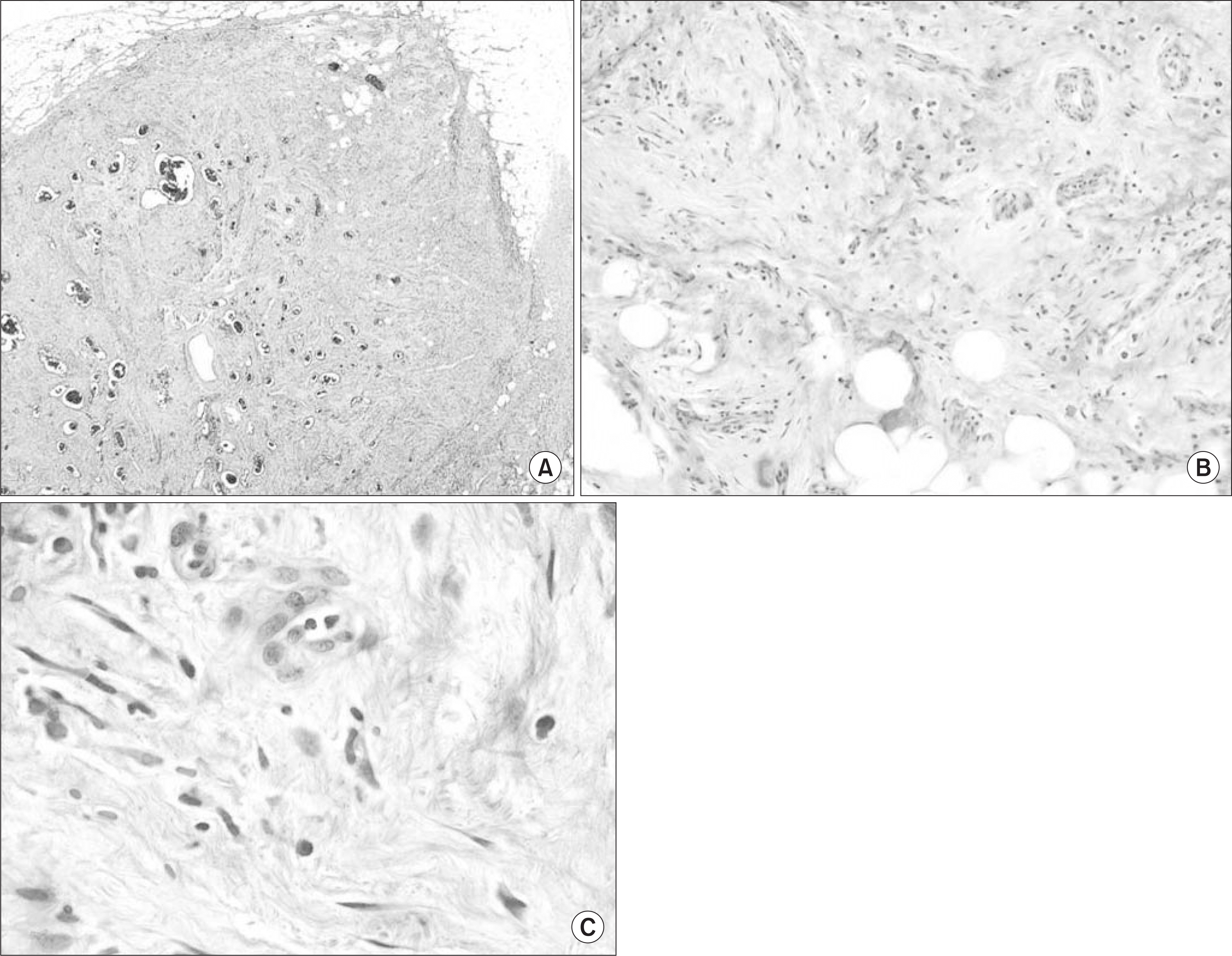




 PDF
PDF ePub
ePub Citation
Citation Print
Print


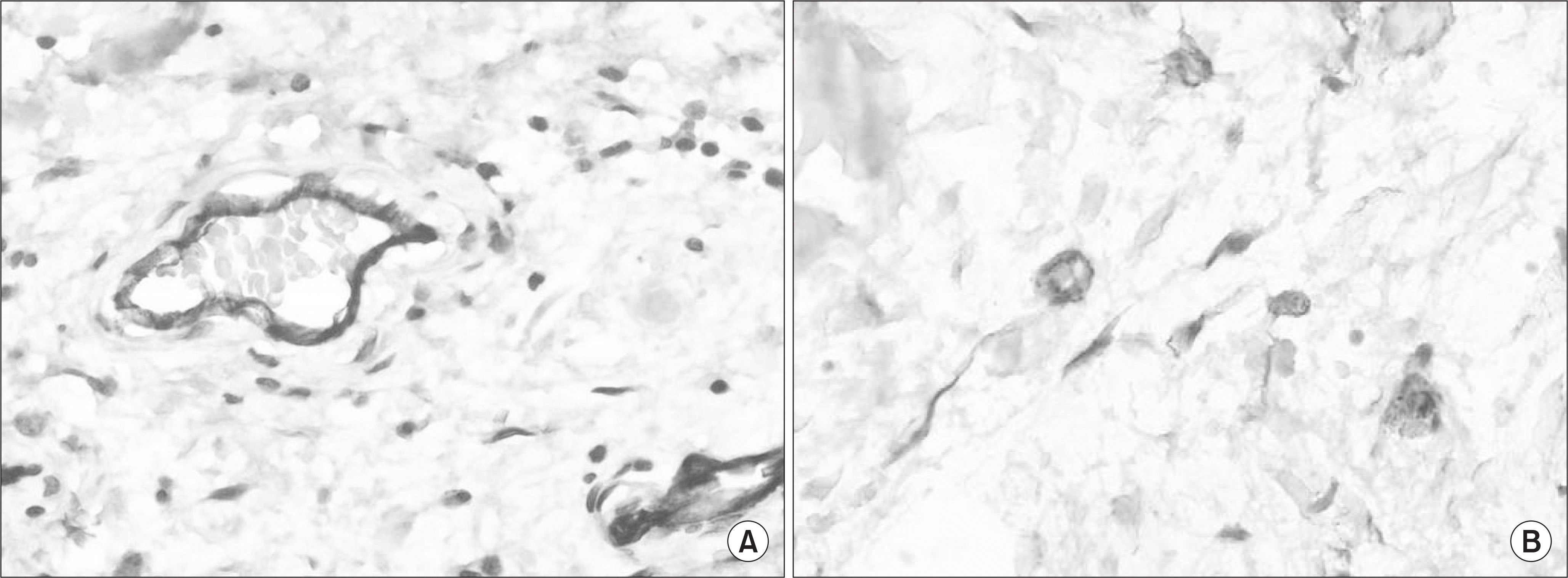
 XML Download
XML Download